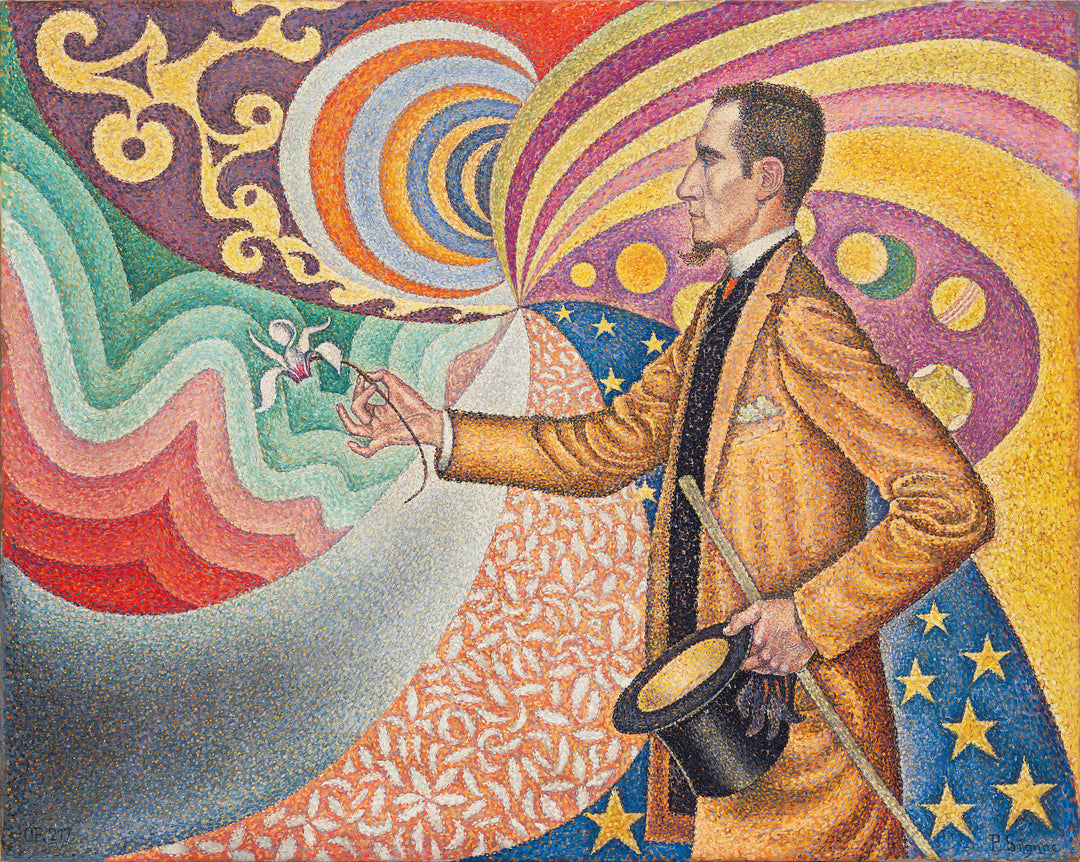
Opus 217. Against the Enamel of a Rhythmic Background of Measures and Angles, of Tones and Tints, Portrait of Mr. Félix Fénéon in 1890 - Paul Signac
| Author: | Signac |
|---|---|
| Title: | Opus 217. Against the Enamel of a Background Rhythmic with Beats and Angles, Tones, and Tints, Portrait of M. Félix Fénéon in 1890 |
| Original location: | Museum of Modern Art, New York, USA |
| Year: | 1890 |
Between science and art, Paul Signac painted in 1890 Opus 217, a portrait that transcends simple figurative representation to become a symphony of color and form. Félix Fénéon, an art critic and one of the main advocates of Neo-Impressionism, appears in the composition in his usual attire—overcoat, top hat, and his characteristic goatee—while behind him bursts a whirlwind of chromatic geometries. This visual choice is not just decorative; it translates into painting the theories of visual rhythm by Charles Henry, who sought to establish a mathematical relationship between color and emotional perception.
The scene was conceived in Signac’s studio in Paris, where the artist took pointillism beyond Seurat’s techniques, experimenting with spatial organization and the fragmentation of light. This portrait is unique in Signac’s body of work, with no additional versions, reinforcing his intention to create an unrepeatable piece that encapsulated the essence of Fénéon: intellectual, provocative, and a champion of modern art.
Beyond its technical aspects, the painting is also a reflection of the political and philosophical context of the late nineteenth century. Fénéon, a sympathizer of anarchism, and Signac, an artist committed to breaking academic rules, shared a vision of art as an act of rebellion. In this sense, Opus 217 represents not just a man, but a mindset that challenges tradition, uniting visual chaos with scientific precision.
Neo-Impressionism, the movement to which this work belongs, developed as a response to Impressionism, structuring its brushstrokes into small dots of pure color that created an optical effect for the viewer. Years later, this approach would influence Fauvism and the early explorations of abstract art, where color and form would no longer depend on reality, but on their own expressive language.
Since 1991, the painting has been part of the Museum of Modern Art in New York (MoMA), establishing itself as one of the most influential pieces of modern painting. With its mathematical structure and exaltation of color, Opus 217 continues to challenge the contemporary gaze, demonstrating that art and science can merge in a single work without losing their ability to move us.